Complete Decarbonization of 2-Wheeler Segment in India by 2030: Expected e-2Ws Sales and Battery Capacity Requirement
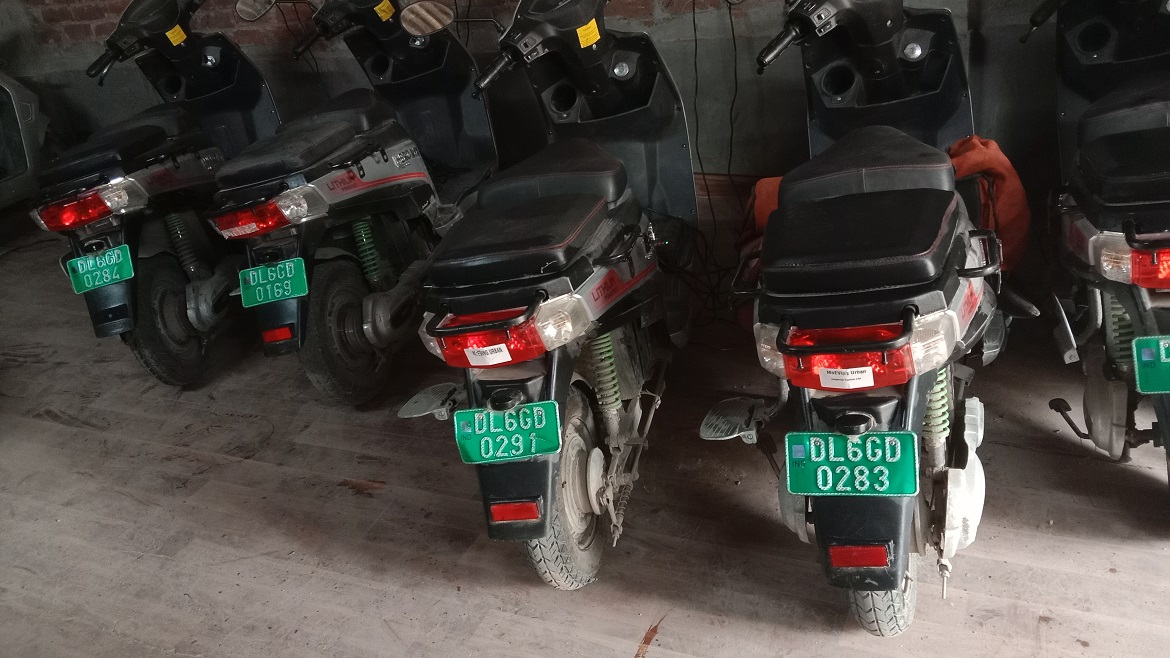
Endeavouring on a path of limiting greenhouse gas (GHG) emissions, India has bid a major stake in the decarbonization of its road transportation through a slew of progressive policy measures. Close to 80% of vehicles on Indian roads are two-wheelers (2Ws), making India undoubtedly the world’s largest untapped EV market in the 2W segment. Presently, electric two-wheelers (e-2Ws) account for approximately 61% of the total Electric Vehicle sales, enabling them to lead the EV adoption drive in India. The recent revision in the FAME-II subsidy from INR 10,000 to 15,000 per kilowatt-hour (kWh) helps in lowering down the upfront purchase cost of e-2Ws. Following the Central Government, several states in India have come up with their set of EV policies to further accelerate EV adoption in their states.
At present, the e-2W segment in India is witnessing a growth in its sales Year-on-Year (Y-o-Y), as shown in Figure 1.
While the pandemic made a dent in the overall sales figures of e-2Ws, it encouraged buyers to switch to cleaner e-2Ws from the polluting Internal Combustion Engine (ICE) variants and increase their penetration to 0.95%. In FAME-II, the e-2W subsidies are primarily targeted towards high-speed variants. However, given the strict guidelines, only 28.5% of the 144,000 e-2Ws sold in FY21 availed of the FAME-II subsidy. Nevertheless, the market share for high-speed e-2Ws is projected to grow to 46% in the coming five years.
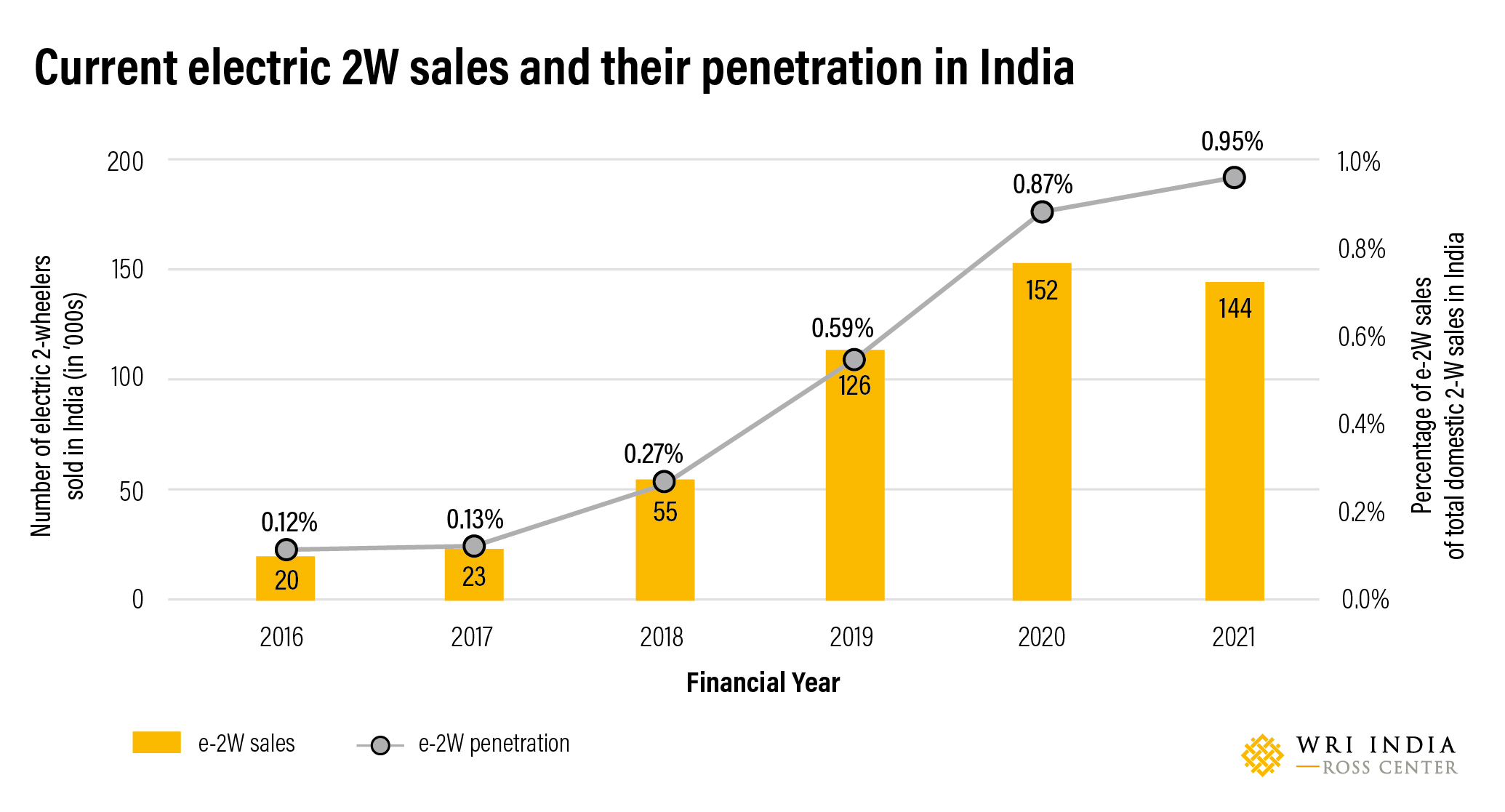
Evolving business models for e-2Ws
The Indian e-2W market, although at a nascent stage, has witnessed various hues and colours of imperatives. It has seen the highest adoption from private consumers because of the close price parity with ICE counterparts, as well as, increased demand by aggregation in last-mile connectivity and last-mile delivery. In commercial usage, e-2Ws emerge as the most potential candidate since their higher daily utilization lowers down the total cost of ownership (TCO) per km in comparison to ICE two-wheelers.
Taking a cue from this, many startups have emerged out in Tier-I and Tier-II towns including Bounce, Vogo, YULU, Zypp that are focused on the bike rental model, while Rapido has adopted the bike aggregation model. During the pandemic, these e-2W ventures brought a major change in their business models with the expansion of their services for e-commerce and hyperlocal deliveries and the introduction of long term rentals. Bounce, YULU, Vogo and e-BikeGo initiated several subscription plans ranging from a week to monthly and annual subscriptions apart from their usual hour-based plans. The model functions like any other Over The Top (OTT) platform allowing subscriptions to be cancelled anytime. Overall, demand aggregation and subscription plans like long term rentals are compelling e-2W adoption in both commercial and private usage.
Projected e-2W Sales Trend
At present, e-2Ws in India is growing at a Compound Annual Growth Rate (CAGR) of 66% (till FY 2020). With the current growth trajectory taken into consideration under a realistic sales scenario, our analysis estimates that close to 34.7 million (cumulative) e-2Ws will be on Indian roads by 2030, further resulting in an e-2W penetration of 47%.
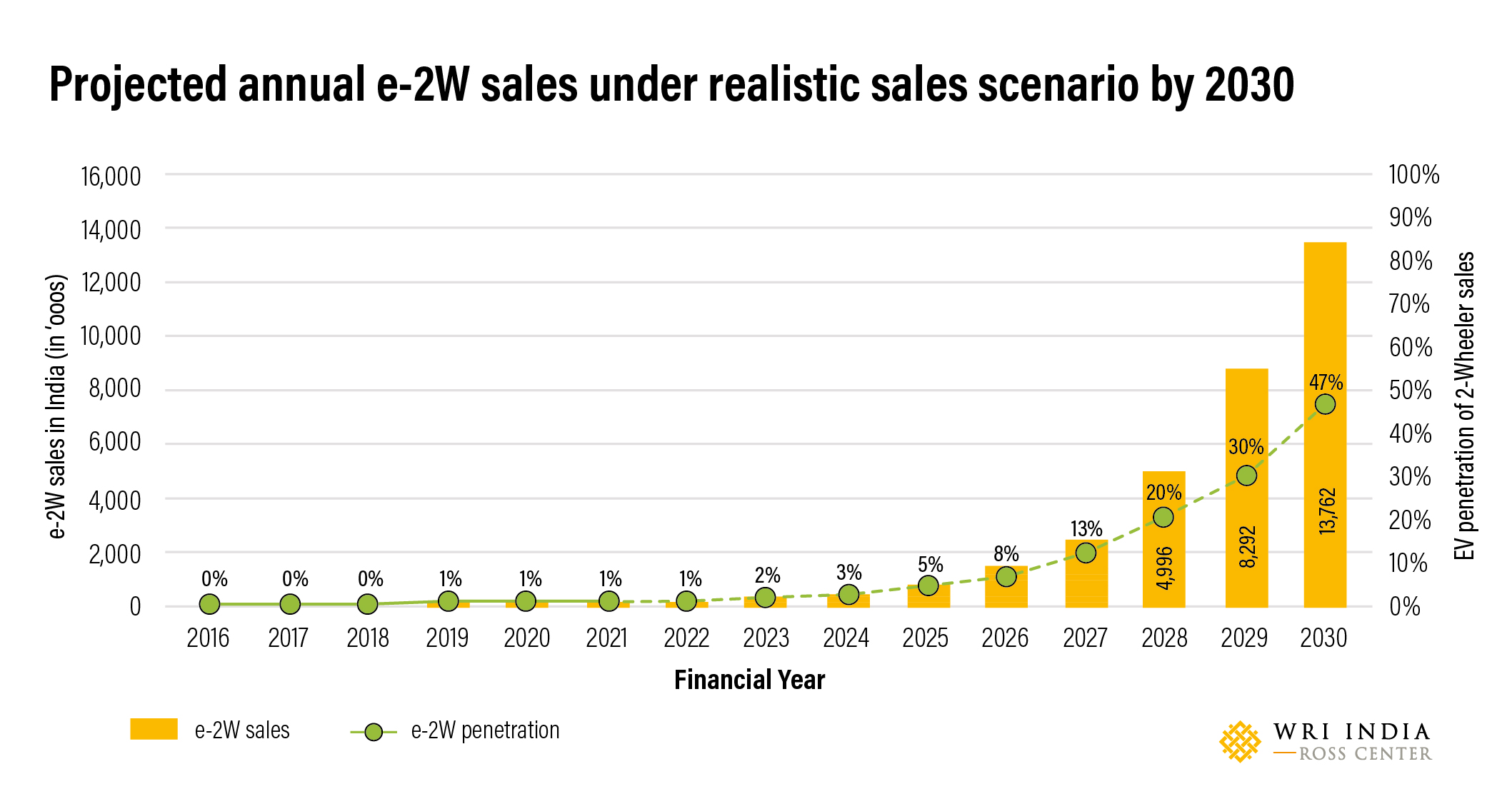
Considering the dominance of two-wheelers on Indian roads, the government think tank, NITI (National Institute for Transforming India) Aayog has set the ambitious target of electrifying 80% of 2W sales by 2030. While this goal would bring close to 54.4 million e-2Ws on Indian roads by 2030, our analysis on phasing out the sale of ICE 2Ws by 2030, termed as the optimistic sales scenario estimates an e-2W stock of 65.8 million by 2030. This makes it evident, that for India to pace towards complete decarbonisation of the 2W segment, it needs to increase the CAGR to ~80% and double the e-2W stock by 2030.
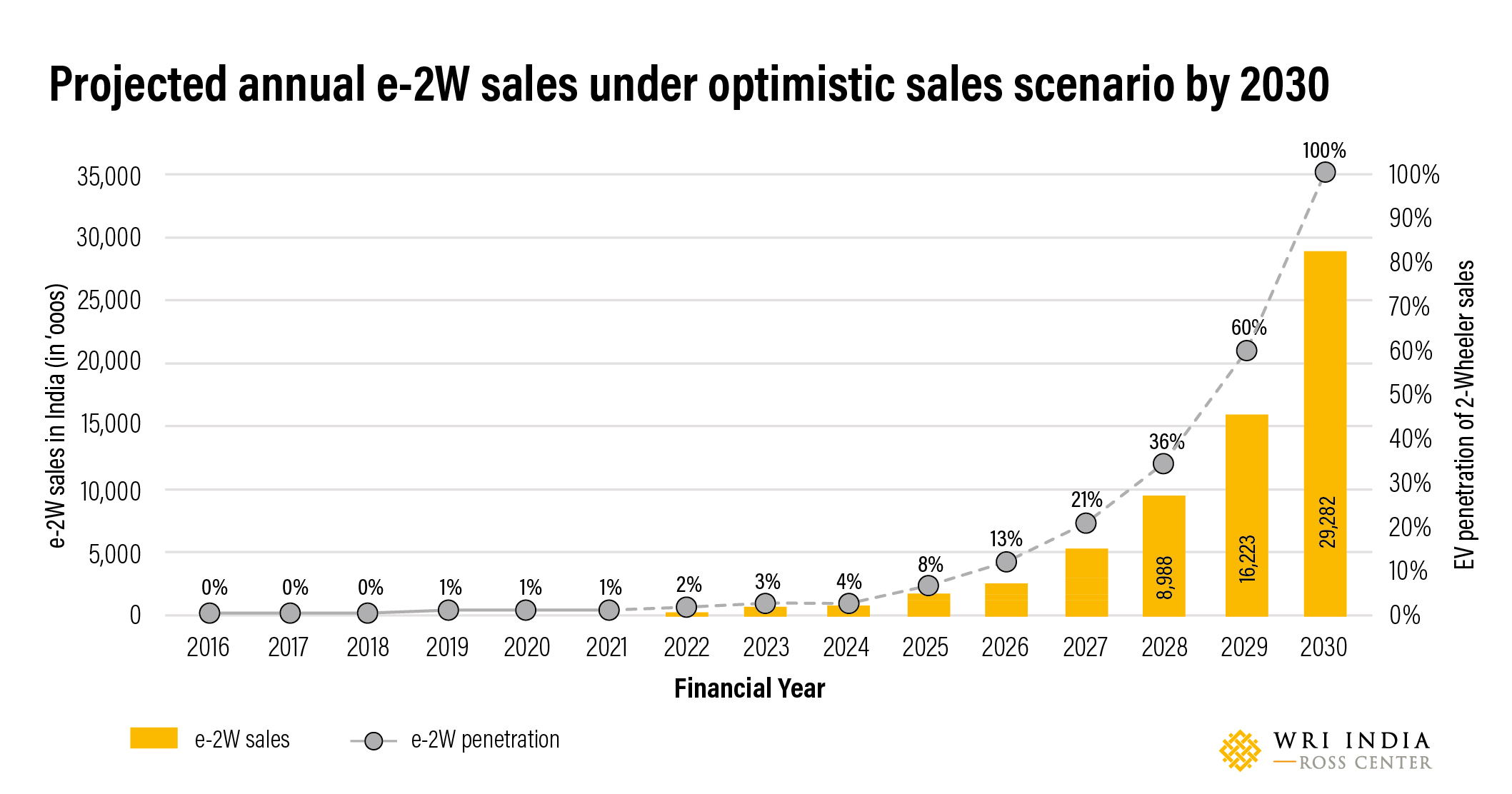
Projected Battery Capacity Requirements
Over the years, e-2Ws have been powered with a range of battery capacities. In the case of low-speed e-2Ws, the battery capacity is in the range of 1.25 – 2 kWh while for high-speed e-2Ws, it is in the range of 2-4 kWh. As low-speed e-2Ws currently make 72% share of the e-2W sales, the average battery pack size was observed to be 2.36 kWh. Furthermore, to keep up with the larger battery pack sizes of high-speed e-2Ws and their increased share forecasted in the next five years, we additionally estimated battery capacity requirements with a battery pack size of 4 kWh.
Figure 4 demonstrates the battery capacity required for e-2Ws under each sales scenario. With an average battery capacity of 2.36 kWh, e-2Ws would require battery capacities of 81 GWh and 154 GWh for the realistic and optimistic sales scenario while with an increased average battery pack size of 4 kWh, the battery capacity requirements increase to 137 GWh and 261 GWh under the realistic and optimistic sales scenarios respectively.
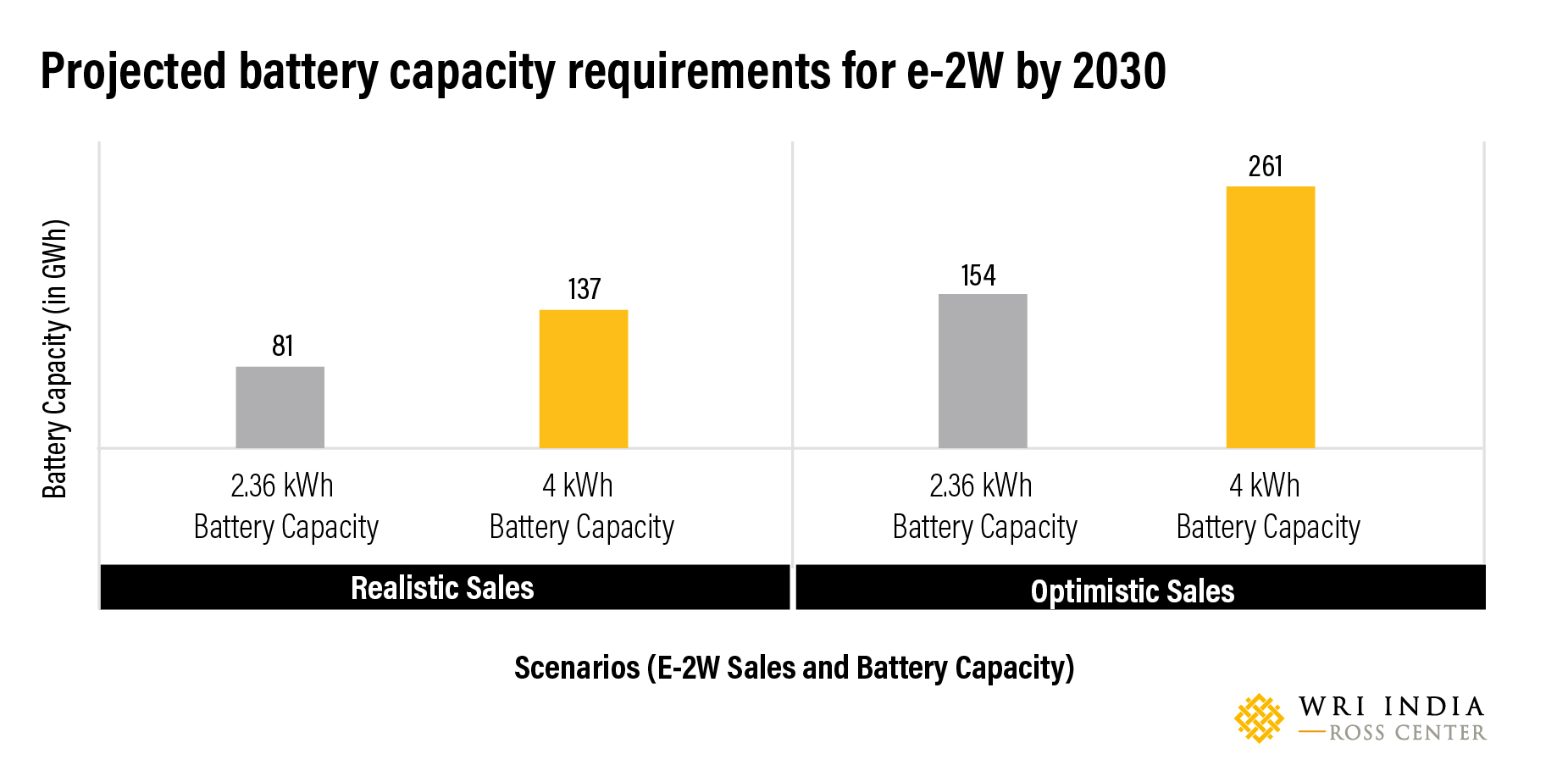
Summary and Way Forward
E-2Ws dominate the Indian EV market with their compelling economics in commercial usage. Under the current circumstances, it is extremely promising that India may cross the realistic sales scenario and achieve the ambitious targets set up under the optimistic sales scenario. This would require an overwhelming amount of 154 to 261 GWh of battery capacities by 2030 and currently positions the early players at an advantageous position. The following steps will help in accelerating the adoption of e-2Ws in India:
- Mandating fleet operators like ride-hailing services and last-mile delivery companies to switch to e-2Ws in a phased manner.
- Provision of financial mechanisms for sale of e-2Ws including easy loans with comparable interest rates as given for ICE 2Ws.
- For supporting the rapid adoption of e-2Ws, proper planning and the establishment of an accessible and robust network of public charging facilities should be facilitated.
Views are personal.
Anshika Singh is a consultant with the Electric Mobility team at WRI India.
